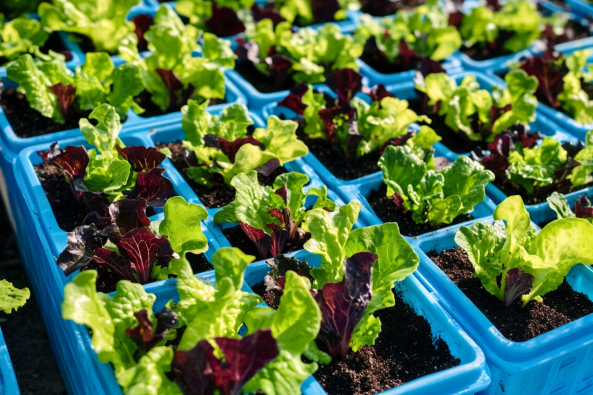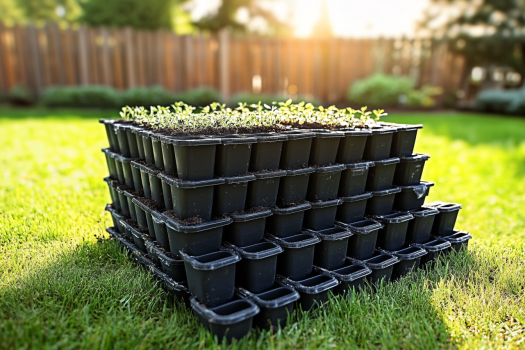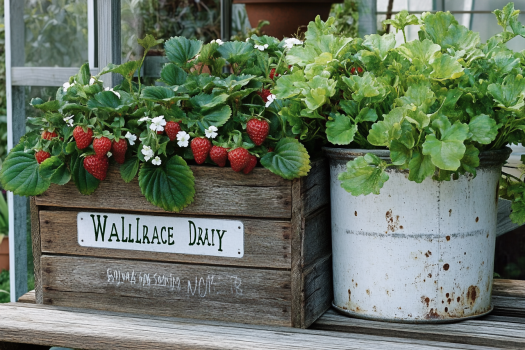Why Finding Free or Cheap Gardening Supplies Matters
Gardening doesn’t have to be expensive. By sourcing free or low-cost gardening containers and plants, you can cultivate a beautiful garden on a budget. Finding budget-friendly gardening supplies not only saves money but also promotes sustainability by repurposing and recycling materials.
Benefits of Budget Gardening
- Maximizes Savings: Reduces costs associated with purchasing pots and plants.
- Encourages Sustainability: Repurposing items minimizes waste.
- Expands Gardening Opportunities: Allows more people to grow food and flowers without financial constraints.
12 Places to Find Free or Cheap Gardening Containers
1. Local Garden Centers & Nurseries
- Ask About Damaged Pots & Returned Plants: Many garden centers discard slightly damaged containers or offer discounts on imperfect plants.
- Best Times to Visit for Clearance Sales: End-of-season sales and restocking periods are ideal for finding discounts.
2. Online Marketplaces (Facebook Marketplace, Craigslist, Freecycle)
- Find Free Containers & Pots Nearby: Search for “free plant containers” or “free pots.”
- Use Keywords Like: “garden supplies,” “free planters,” or “plant pots available.”
3. Yard Sales & Estate Sales

- Negotiate for Lower Prices: Sellers often bundle items for discounts.
- Look for Unusual Plant Containers: Old bowls, baskets, and bins make creative planters.
4. Flea Markets & Thrift Stores
- Find Vintage & Unique Containers: Ceramic bowls, old teapots, and baskets can be transformed into planters.
- Repurpose Everyday Items: Use metal tins, wooden crates, and mason jars.
5. Community Garden Swaps & Free Events
- Network with Local Gardeners: Many gardening groups host free plant and container swaps.
- Where to Find Events: Check local botanical gardens, gardening clubs, and community boards.
6. Landscaping Companies & Tree Nurseries
- Ask for Discarded Containers: Landscaping companies often discard excess pots, compost bags, and soil.
- Get Free Mulch & Compost: Many companies offer free mulch from trimmed trees.
7. Restaurants, Bakeries & Grocery Stores

- Repurpose Food-Grade Buckets: Large plastic containers from bulk foods, frosting buckets, or olive barrels make excellent plant pots.
- How to Request Used Containers: Politely ask the manager if they have empty containers available.
8. Construction Sites & Industrial Areas
- Find Discarded Wood, Pallets & Large Containers: Many construction companies discard excess materials perfect for DIY planters.
- Safety Precautions: Ensure materials are free from chemicals before using them in a garden.
9. Schools, Churches & Community Centers
- Ask About Surplus Gardening Supplies: Schools and churches with landscaping projects often replace old pots.
- Connect with Local Organizations: Many donate excess planters, soil, and tools.
10. Recycling Centers & Landfills
- Legally Source Discarded Pots & Containers: Some recycling centers allow people to take unwanted gardening supplies.
- Check for Quality Materials: Look for intact ceramic pots, wooden planters, and plastic bins.
11. DIY Container Gardening with Household Items
- Repurpose Plastic Bins, Old Furniture & Baskets: Transform old dressers, kitchen pots, or broken chairs into plant holders.
- Turn Tires, Barrels & Crates into Planters: Paint old tires or wooden crates for an upcycled garden.
12. Ask Friends, Neighbors & Gardening Groups
- Join Local Gardening Groups on Social Media: Many gardeners give away excess supplies.
- Start a Community Gardening Exchange: Set up a swap with neighbors for planters and plants.
12 Places to Find Free or Cheap Plants
1. Propagate Plants from Cuttings
- Best Plants for Easy Propagation: Mint, basil, rosemary, succulents, pothos, and spider plants.
- How to Propagate: Take a cutting, place it in water, and transplant it once roots appear.
2. Rescue Dying or Clearance Plants from Stores
- How to Revive Struggling Plants: Provide proper watering, repot into fresh soil, and trim dead leaves.
- Stores with Discounted Plants: Home Depot, Lowe’s, and local nurseries often have clearance sections.
3. Farmers Markets & Local Plant Sales
- Negotiate for Cheaper Plants: Vendors often offer bulk discounts.
- Find Free Plant Giveaways: Some markets host plant exchange booths.
4. Garden Tours & Botanical Gardens
- Get Cuttings or Seeds from Tours: Some botanical gardens offer free plant cuttings or seed packets.
- Find Rare & Native Plants: These locations often have unique plant varieties.
5. Arbor Day Foundation & Other Nonprofits
- Join for Free Trees & Plants: Many conservation groups offer free trees to members.
- Nonprofits That Give Away Plants:
- Arbor Day Foundation
- Local environmental conservation groups
6. Seed Exchanges & Community Libraries
- Find Free Seeds for Vegetables & Flowers: Many libraries and garden centers have “seed libraries.”
- Participate in Seed Swaps: Some community groups host seasonal exchanges.
7. Yard Sales & Estate Sales
- Buy Discounted or Neglected Plants: Some homeowners sell large, established plants at a fraction of retail cost.
- Look for Outdoor Plant Sales: Estate sales often have rare potted plants available.
8. Garden Clubs & Facebook Groups
- Join Groups That Give Away Free Plants: Many clubs organize plant swaps.
- How to Trade Plants with Fellow Gardeners: Offer excess cuttings in exchange for new plant varieties.
9. Starting from Seeds for the Cheapest Option
- Best Plants to Grow from Seed: Lettuce, basil, marigolds, sunflowers, tomatoes.
- Where to Find Free or Cheap Seeds:
- Local gardening events
- Online seed swap communities
10. Checking the Clearance Section at Home Improvement Stores
- When Stores Mark Down Plants: End-of-season sales, damaged plant sections, or restocking periods.
- Tips for Scoring the Best Deals: Look for healthy stems and roots, even if leaves look damaged.
11. Schools, Churches & Office Buildings
- Where to Find Surplus Landscaping Plants: Schools, corporate offices, and churches often remove plants seasonally.
- Connect with Property Managers: Ask if any plants or landscaping materials are available for pickup.
12. Local Nature Reserves & Reforestation Programs
- Find Free Native Plants: Conservation groups often distribute free plants for reforestation efforts.
- Get Involved in Community Tree Planting Programs: Volunteers sometimes receive free saplings.
Tips for Maximizing Your Budget-Friendly Gardening Resources
- Sanitize Second-Hand Planters: Use vinegar or mild bleach solution to disinfect.
- Revive Discounted Plants: Prune dead leaves, repot in fresh soil, and water appropriately.
- Organize Free Gardening Supplies: Store containers and seeds in a dry, cool place.
Common Mistakes to Avoid When Finding Free Gardening Supplies
- Using Unsafe or Contaminated Materials: Avoid pots or soil exposed to chemicals.
- Overloading on High-Maintenance Plants: Choose plants suited for your climate and lifestyle.
- Not Checking Plant Health Before Bringing Them Home: Inspect for pests and diseases.
Conclusion: Start Your Budget-Friendly Garden Today!
With so many options to find free or cheap gardening containers and plants, anyone can start a garden without breaking the bank. Get creative, repurpose materials, and connect with fellow gardeners to build your dream green space for little to no cost!
Related Posts You May Like
For more budget-friendly gardening tips, visit this guide.

